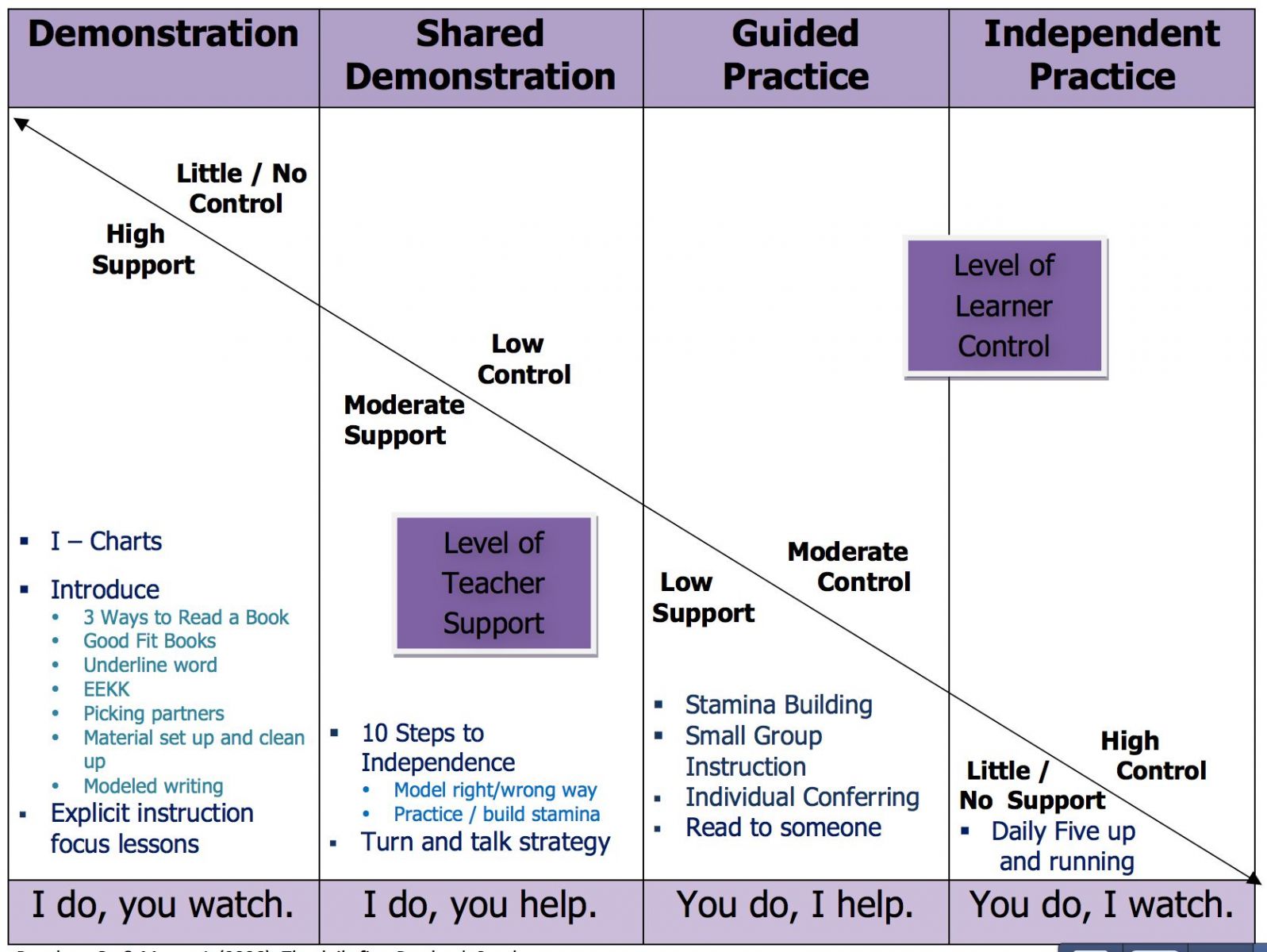Gradual Release of Responsibility
Join Our Community
Access this resource now. Get up to three resources every month for free.
Choose from thousands of articles, lessons, guides, videos, and printables.

The Daily 5 structure allows a teacher to
-
differentiate instruction,
-
teach small groups while other students work productively,
-
confer individually with students, and
-
create and support independent readers and writers.
One reason the Daily 5 structure is so successful is that it allows teachers to individualize instruction based on the needs of individual students through whole-group, small-group, and one-on-one instruction. Research shows that "To be effective, teachers must engage students in purposeful instruction designed to meet the needs of both individuals and small student groups" (Fischer & Frey, 2008). The Daily 5 structure redirects instruction away from a one-size-fits-all approach.
When using the Daily 5 structure, teachers gradually release the responsibility of learning to the students. Students go from brief, explicit instruction focus lessons, to guided instruction, to collaborating with peers, to working independently on reading and writing strategies. Students learn expectations quickly and thoroughly as strategies are modeled, practiced, and demonstrated. By using brief focus lessons (the minutes of instruction correlate with students' average age) followed by collaborative and individual practice, students are given the opportunity to understand and apply new strategies.
The gradual release of responsibility model consists of four stages. Daily 5 blends nicely with these stages.
-
Demonstration?This stage includes the introduction of each of the five components along with the I-charts for each. It also includes explicit instruction focus lessons that happen each day in between rounds of Daily 5.
-
Shared Demonstration?In Daily 5, this begins with the 10 Steps to Independence. When children are asked to model behaviors the right way and the wrong way, they are demonstrating desired behaviors to their peers. In addition to this, the turn-and-talk strategy is an excellent way to support students in the "I do, you help" phase of learning.
-
Guided Practice?This is considered the "You do, I help" phase. In Daily 5, this includes small-group instruction, one-on-one conferring, and stamina building. It can also include Read to Someone or Word Work activities that allow students to work collaboratively.
-
Independent Practice?This is the ultimate goal of Daily 5. We reach this stage when our students are fully trained in all five components of Daily 5 and are successful, independent readers and writers. We also reach this stage each time a student can use a strategy independently, leading them closer toward realizing his/her individualized goals.
The following chart demonstrates how learning is gradually transferred from the teacher to the students in Daily 5. It is fascinating to watch this take place and even more fascinating to see the results.
References
Boushey, G., & Moser, J. (2006). The daily 5. Portland, ME: Stenhouse.
Fisher, D., & Frey, N. (2008). Better learning through structured teaching. New York: Knopf Books for Young Readers.




